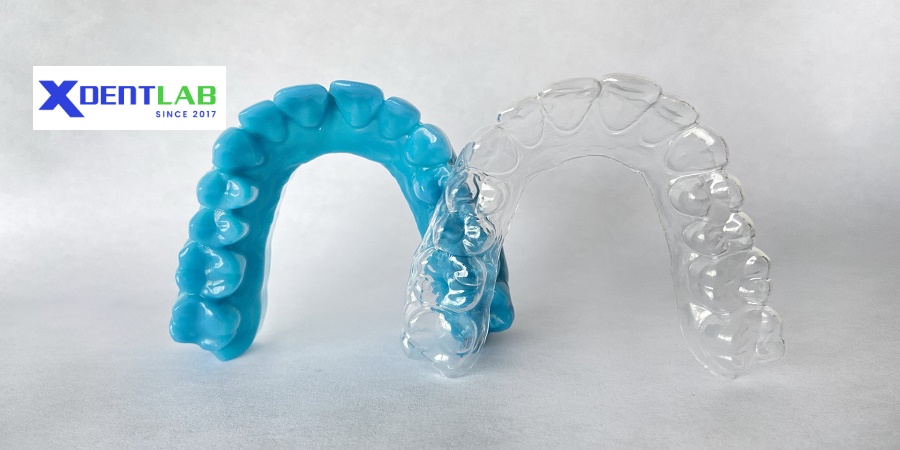
Invisible aligner manufacturing xdentlab.com Invisible aligners represent a significant advancement in orthodontic treatment, providing an aesthetic and comfortable alternative to traditional metal braces. Unlike conventional braces, which are fixed and often disruptive to one’s daily life and self-image, invisible aligners are custom-made, removable appliances that gradually shift teeth into their desired positions. This non-invasive approach has garnered substantial attention within the orthodontic community, fundamentally changing how patients undertake the journey to achieving their ideal smile.
Introduction to Invisible Aligners
One of the primary benefits of invisible aligners is their discreet nature. Made from clear, medical-grade plastic, these aligners are virtually unnoticeable when worn, allowing individuals to feel confident during their treatment process without drawing unnecessary attention. Additionally, the comfort level associated with invisible aligners tends to be superior to that of traditional braces. Patients often experience less irritation, as there are no brackets or wires to create discomfort against the soft tissues of the mouth.
The removable nature of invisible aligners provides significant advantages in terms of oral hygiene and diet. Patients can easily take out their aligners while eating or drinking, enabling them to maintain their regular eating habits without restriction. Furthermore, Vietnam dental lab this feature encourages better oral hygiene, as patients can continue to brush and floss their teeth as they normally would. The ease of cleaning both the aligners and the teeth contributes positively to oral health during the course of treatment.
Due to these benefits, the popularity of invisible aligners has surged in recent years. They have transformed the landscape of orthodontic care, appealing particularly to adults and teens seeking a less intrusive means of achieving straight teeth. As the technology continues to evolve and improve, the future looks bright for invisible aligners in the realm of orthodontics.
The Manufacturing Process of Invisible Aligners
The manufacturing of invisible aligners is a meticulous process that begins with an initial consultation and a series of digital scans of the patient’s dental structure. During the consultation, a dental professional assesses the patient’s oral health and discusses treatment goals. Subsequently, advanced digital scanning technology captures detailed impressions of the teeth, generating a precise map of the dental arcade. These scans effectively replace traditional molds, offering increased accuracy and comfort for the patient.
Once the digital impressions are obtained, they are transformed into a 3D model using sophisticated computer-aided design (CAD) software. This step is crucial, as the 3D model allows orthodontists to visualize the desired tooth movements throughout the treatment. Using this model, the aligner treatment plan is developed, outlining the specific movements of each tooth over the course of the aligner series.
The choice of materials in the production of invisible aligners is paramount. The most commonly used material is a thermoplastic polymer known for its durability and transparency. This allows for the aligners to be effective while remaining virtually invisible when worn. Following material selection, the manufacturing process employs advanced 3D printing technology to create the individual aligners. Precision is critical in this stage; the aligners must fit snugly yet comfortably over the patient’s teeth to ensure effective movement.
Quality Dental lab in vietnam are implemented throughout the manufacturing process. Each aligner is rigorously tested to ensure that it meets the specified parameters established during the design phase. This ensures that the final product not only fits the patient’s dental structure but also adheres to the practice’s high standards. The combination of technology, materials, and stringent quality checks ultimately allows for the creation of personalized invisible aligners that are both effective and comfortable for the patients.
Future Trends in Invisible Aligner Technology
The domain of invisible aligner technology is on the cusp of significant transformation, driven by innovations that streamline both manufacturing processes and treatment protocols. One of the most promising advancements lies in the development of new materials. Manufacturers are focusing on creating aligners that not only enhance comfort for patients but also increase the efficacy of the treatment. These advanced materials aim to deliver improved durability, flexibility, and stain resistance, ensuring that patients can achieve optimal results while maintaining the aesthetics and comfort associated with invisible braces.
Artificial intelligence (AI) is another pivotal trend that is revolutionizing the landscape of orthodontics. By employing machine learning algorithms, aligner manufacturers can analyze patient data more effectively and generate precision treatment plans tailored to each individual’s unique dental anatomy. Such integration allows for the anticipation of treatment outcomes with greater accuracy and efficiency. This not only enhances the customer experience but also helps orthodontists make more informed decisions throughout the treatment journey, thus minimizing adjustments and prolonging patients’ satisfaction with their invisible aligners.
Moreover, advancements in 3D printing technology are likely to elevate the level of customization available to patients. These innovations enable the creation of aligners that are uniquely tailored to fit the contours of each individual’s mouth. By allowing for rapid prototyping and adjustments during treatment, 3D printing significantly shortens the time required to achieve desired results. Furthermore, these enhancements in customization may facilitate more comprehensive treatment options, possibly expanding the eligible patient population for invisible aligners.
Related articles: Aligner Companies in Vietnam
Overall, the future of invisible aligner technology presents a promising landscape characterized by ongoing advancements in materials, AI-driven treatment planning, and enhanced customization capabilities. These trends not only aim to improve the efficacy of orthodontic treatments but also prioritize patient comfort and overall satisfaction, marking a significant evolution in orthodontics.
